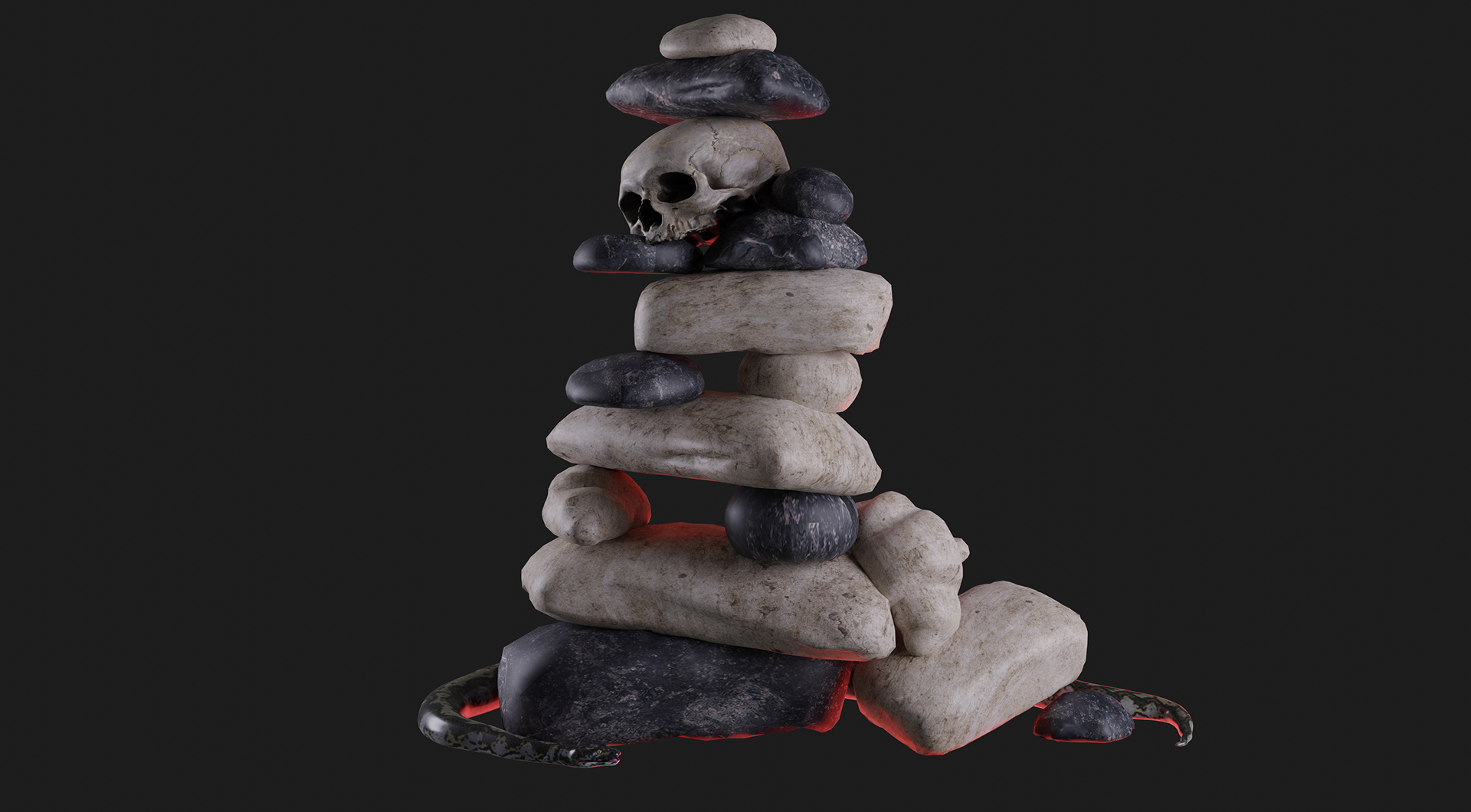
During my walks through Freiburg, I came across a small commemorative plaque at Martinstor, marking the history of the "Hexenverbrennung in 1599"—the burning of accused witches. Next to it, someone had scribbled the words "bis heute"—until today. This image got imprinted in my mind as a gloomy feeling, that the ghosts of the past are skulking among us in the present. In what shapes do they grow and spread so rapidly? Who are the new scapegoats, being cast out, vilified, and condemned today?
For the Freiburg Biennale, I developed an AR object placed at Freiburg’s Old Cemetery. It is a monument made of bread, resembling a burned breadbasket. In Southwestern Germany, the witch hunts erupted two decades after the Peasant War, a direct response to social and economic crises. Between 1550 and 1630, food prices escalated drastically, and with them, the number of executions rose. High infant mortality in the 16th and 17th centuries was driven by poverty and malnutrition. Scarcity bred suspicion, and the ones accused were often those who lived at the margins: widows, healers, and midwives—women who had knowledge of childbirth and birth control.
A sculptural reference for this project is a stone cross at Freiburg’s Old Cemetery, which stands in front of the Michaelskapelle. At its base, a skull carved in stone bears an iron ring through its hollow mouth and cheek. On the other side, a toad lurks from within. This image resonates deeply with the imagery of the witch trials. Femininity was equated with animality—women accused of witchcraft were believed to shift their forms, morphing into animals. The toad, often cited as a witch’s familiar, became a symbol of sexuality, bestiality, and evil.
Suppose we apply to the present the lessons of the past. In that case, we realize that witch-hunting reappears in different parts of the world, rendered on our screens in real-time: genocides persist, women face relentless violence, and social progress unravels.
The digital monument symbolizes that the nature of persecution is cyclical. The witch-hunt rises again, only in different forms.
Was born in 1995 ( Kharkiv, Ukraine )Interdisciplinary media artist, working in the field of digital technologies with video, VR and AR, installation, 3D-animation with an emphasis on posthumanism and feminist practice.Artist-in-residence at ZKM Center for Art and Media in 2022. Participated in the exhibition at Manifesta 14, Prishtina curated by Secondary Archive.Finalist of the cultural exchange program Exter, supported by the Ukrainian Institute. Fellow of the Gaude Polonia program 2021 from the Polish National Cultural Center. Graduated from Kharkiv Academy of Design and Arts in 2020. Currently studying Media Art at HFG, Karlsruhe.Her works were exhibited in Germany, France, China, Slovakia, Austria, Ukraine, Latvia, Poland, and Lithuania.Since March 2022 has been based in Karlsruhe, Germany.